Hibiscus geranioides
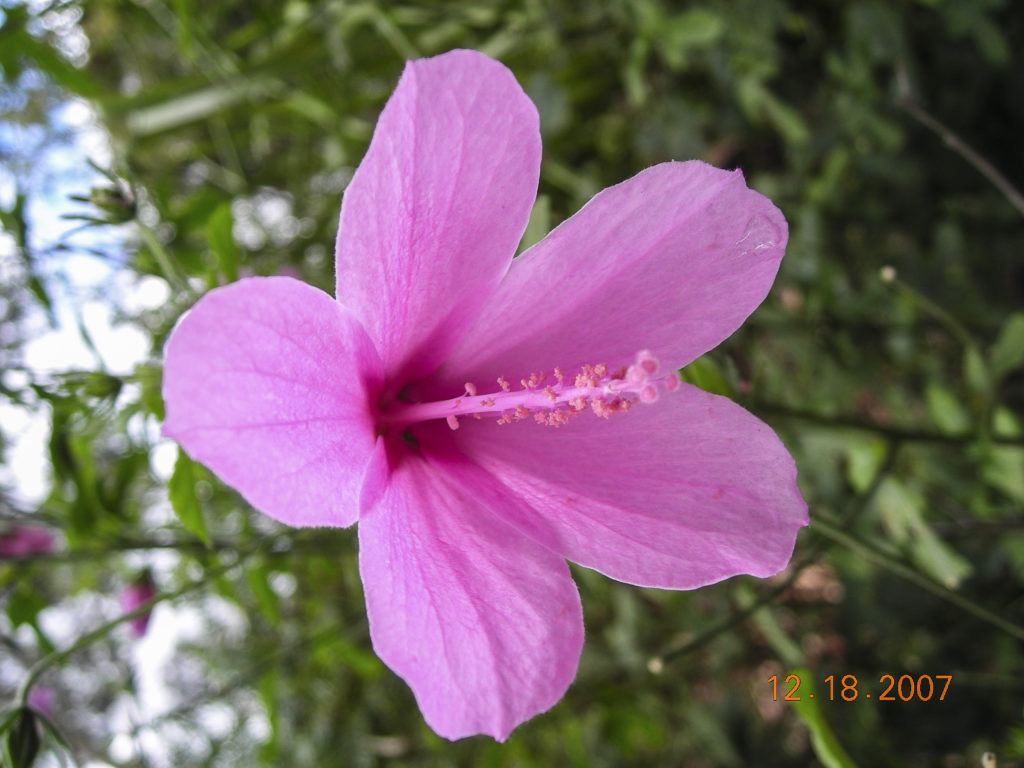
Hibiscus is a widespread genus of the family Malvaceae, consisting of 250 species, growing in regions ranging from tropical to temperate. Of these species, 35 are native to Australia and are largely restricted to the east coast.
Halgania anagalloides var. Southern (syn: Halgania preissiana)
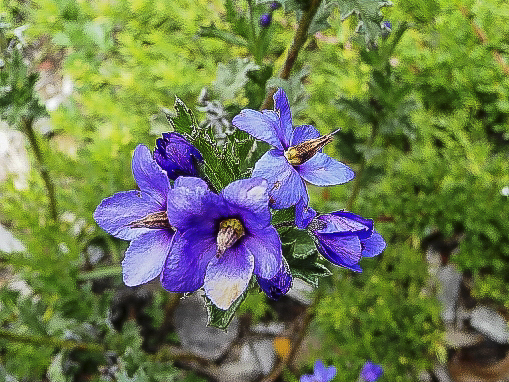
Halgania anagalloides var. Southern is a member of the Boraginceae family in company with the exotic Borage and Comfrey. It prefers well-drained sites in full sun or light shade. Our specimens cope with frosts and drought. Remove old branches to keep plant dense and bushy.
Hibbertia aspera
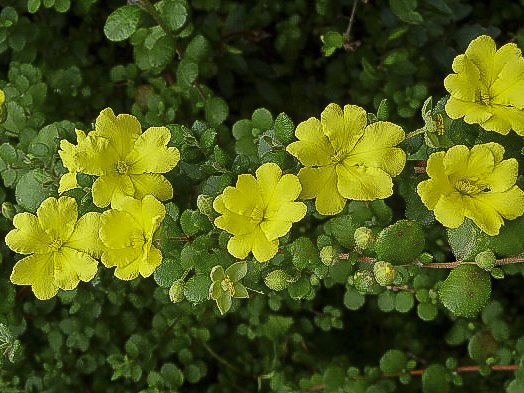
Hibbertia aspera, the Rough Guinea Flower, is usually a bushy, dwarf to medium shrub that may spread by suckers. The stems are wiry and roughened. Leaves are up to 25 millimetres long, 10 millimetres wide, elliptical, light to deep green with a rough surface (hence the common name). Yellow flowers are one centimetre across and solitary on slender stalks.
Grevillea oldei
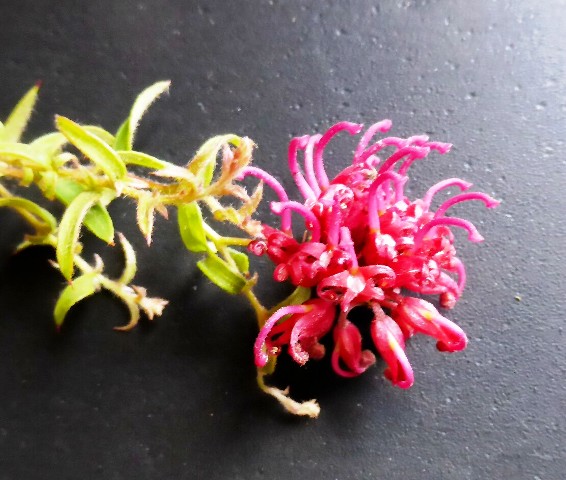
Grevillea oldei is a small, open shrub with arching branches and may reach a height of one metre. The leaves are narrowly ovate to almost triangular with a sharp point. Bright red flowers are carried in pendulous, terminal globular clusters.
Grevillea ‘Lemon Daze’
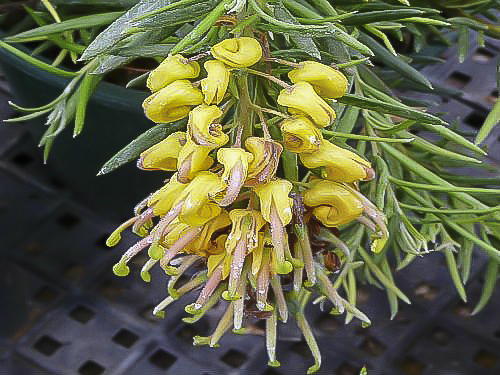
Grevillea ‘Lemon Daze’ is a small one metre high shrub. Narrow leaves are light green. Large pendulous flower heads are a dazzling yellow and pink. Honeyeaters visit the blooms. The lengthy flowering period extends from autumn to spring.
Grevillea leiophylla
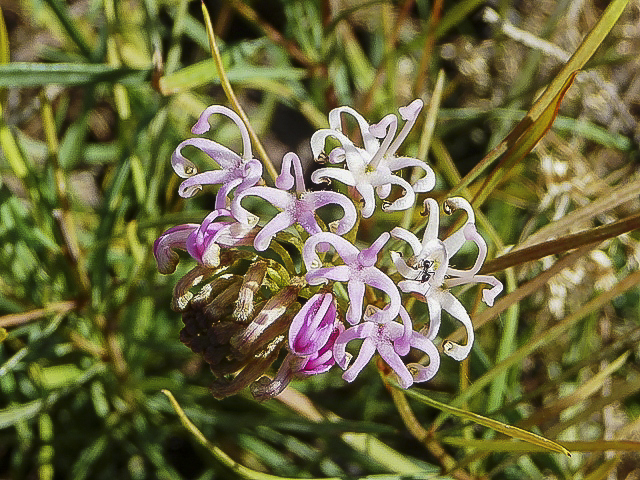
Grevillea leiophylla is a small shrub with linear-lanceolate leaves up to 30 millimetres long. Pink flowers are held in terminal, spidery clusters and appear in spring and summer. This small species is a native of Queensland and is found north of Brisbane.
Grevillea lanigera ‘Mt Tamboritha’
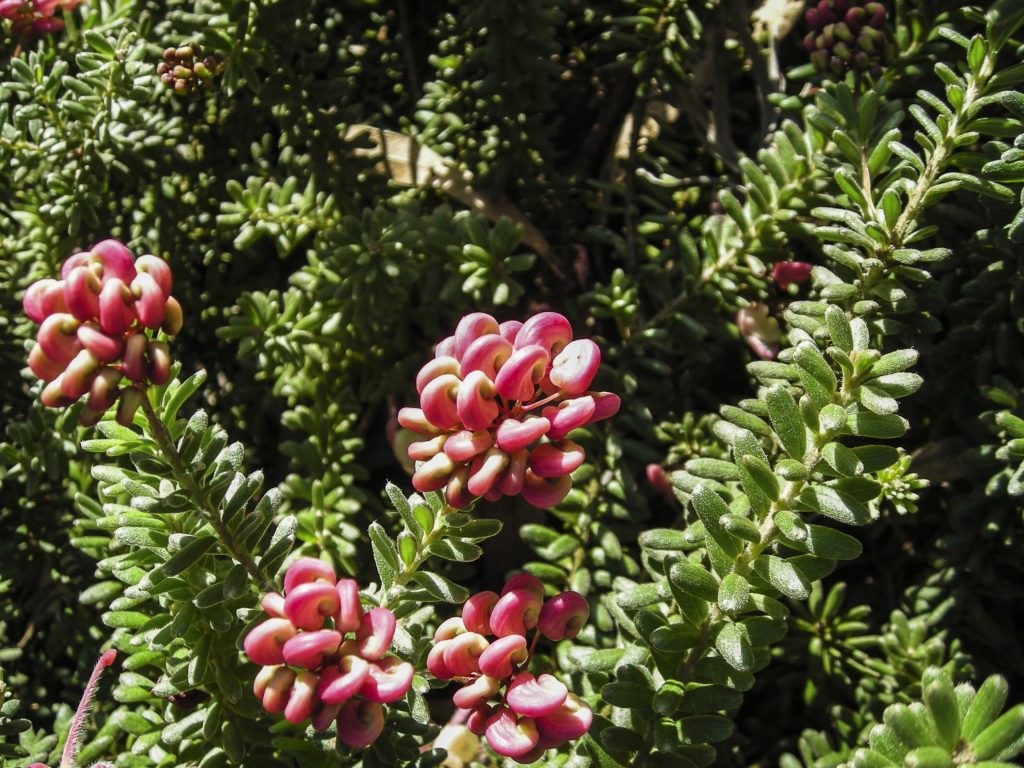
Grevillea lanigera ‘Mt Tamboritha’ make an excellent compact ground cover as they grow to about one metre (or less) in diameter to about 20 cms high in situations with full sun to partial shade in fairly well drained soils. Its attractive grey/green foliage is a good colour contrast to its flowers, and is best shown if planted in groups of three.
Grevillea humilis
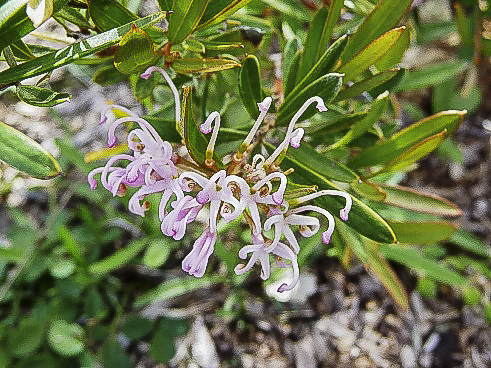
Grevillea humilis is an erect to spreading shrub that may reach a height of just over one metre. Flowers are carried on the ends of branches and may be white or pink. Peak flowering occurs in spring and summer with sporadic flowering at other times.
Grevillea evansiana
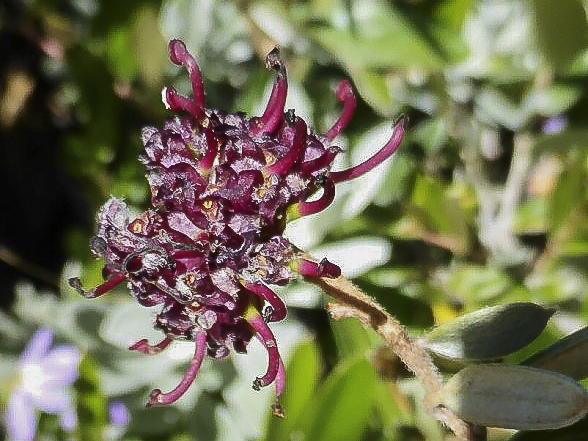
Grevillea evansiana is an attractive small shrub with unusual flowers and could be cultivated in a native garden bed or large rockery. Grevillea evansiana is surviving and thriving in our cold climate garden.
Grevillea ‘Bonnie Prince Charlie’

Grevillea ‘Bonnie Prince Charlie’ is a dwarf, bushy shrub that reaches a height of one metre. This is one many hybrid natives developed by Bywong nursery. Oblong leaves are about four centimetres long, dark green above and paler below. Profuse and conspicuous flowers are red and yellow. They appear for lengthy periods.
Grevillea ‘Amethyst’
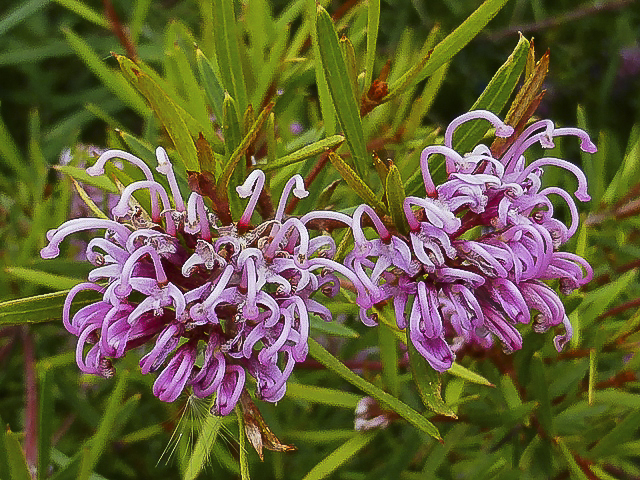
In our cold climate garden when in flower Grevillea ‘Amethyst’ is one of our most eye-catching plants. The mauve flowers literally cover the plant. Grevillea ‘Amethyst’ could be cultivated in a rockery or native cottage garden. This hardy hybrid could also be grown as the border to garden beds as a colourful substitute for the ubiquitous exotic box.
Grevillea acerata
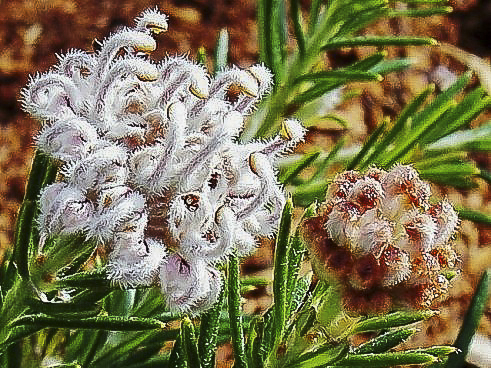
Grevillea acerata is a short shrub that is usually about one metre tall. Young growth is light green and mature leaves are linear, green above and whitish below. Each leaf is crowned with a prickly point. Clusters of flowers are carried on the ends of branches. Blooms are hairy and an unusual pale grey-pink and white colour. Flowering is profuse between June and December.
Goodenia decurrens
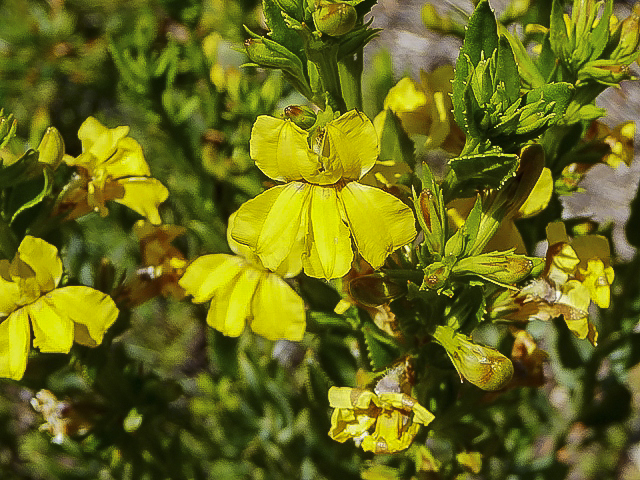
Goodenia decurrens is a small erect shrub with multiple stems. The leaves are five to ten centimetres long, lanceolate with toothed margins. The profuse bright yellow flowers are about two centimetres across and are carried in dense clusters during the warmer months with sporadic flowering at other times.
Eremophila decipiens
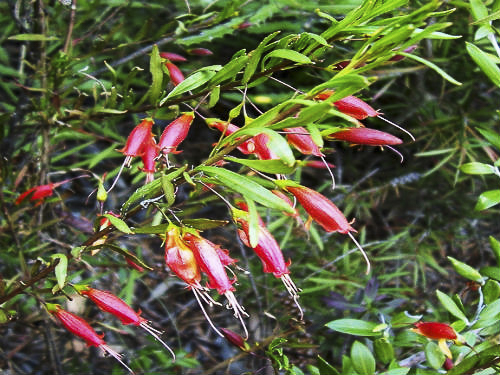
Eremophila decipiens, Slender Emu Bush, is a small shrub that reaches a height of one metre. Flowers are typically tubular with four upper lobes and one lower. Blooms are bright red, profuse and appear from April to November.
Crowea ‘Poorinda Ecstasy’
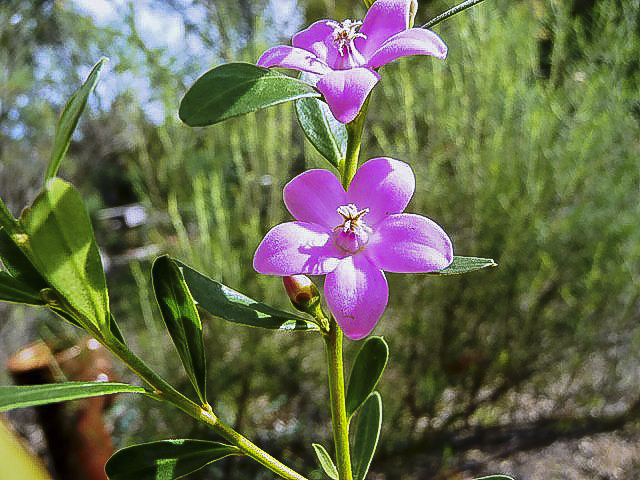
Crowea ‘Poorinda Ecstasy’ is a hybrid whose parents are thought to be Crowea saligna and a form of Crowea exalata. The former parent may have been a form of C. saligna from the Central Coast of New South Wales. The latter parent comes from northern Victoria.
Correa ‘Cardinal Bells’

Correa ‘Cardinal Bells’ is a compact shrub reaching a height of one metre. The foliage is bright green. The eye-catching, large, tubular flowers are orange/red and appear in large numbers in the cooler months. As with all the Correas the flowers, of this cultivar, are rich in nectar consequently the blooms are a magnet for honeyeaters.
Callistemon ‘Little John’
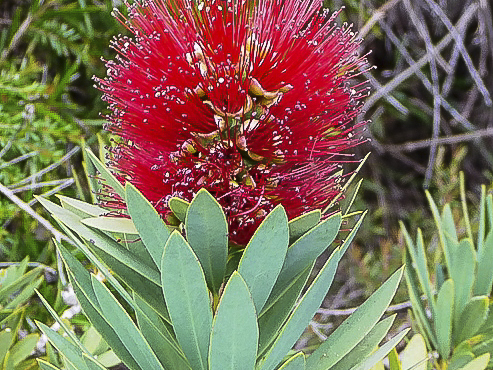
Callistemon ‘Little John’ is an attractive dwarf, rounded shrub that reaches a height of 1 to 3 metre by 1 metre wide. The narrow leaves are an unusual blue-green and crowed along the stems. Flowering is prolific in spring and in our cold climate garden plants also bloom in autumn and winter. Honeyeaters visit the flowers. Growth habit, foliage and flowers are attractive features.
Callistemon ‘White Anzac’
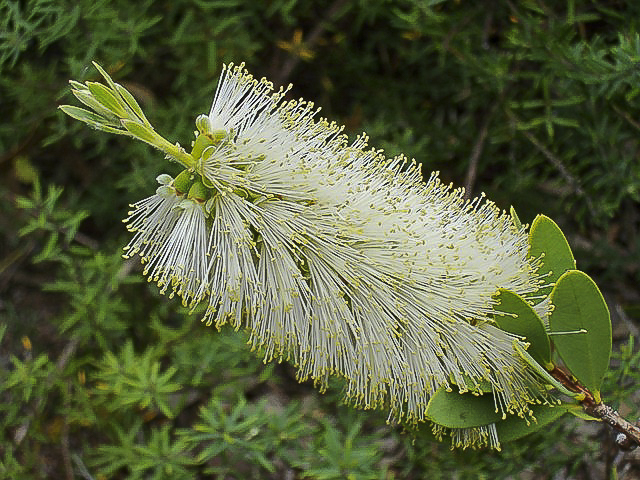
Callistemon ‘Anzac’ is a form of Callistemon citrinus collected from a wild population on Anzac Cove, southern Sydney NSW. The cultivar was registered in 1986. It is a sprawling shrub growing to a height of one metre with a maximum spread of three metres. In our cold climate garden plants seldom exceed one metre across.
Boronia crenulata
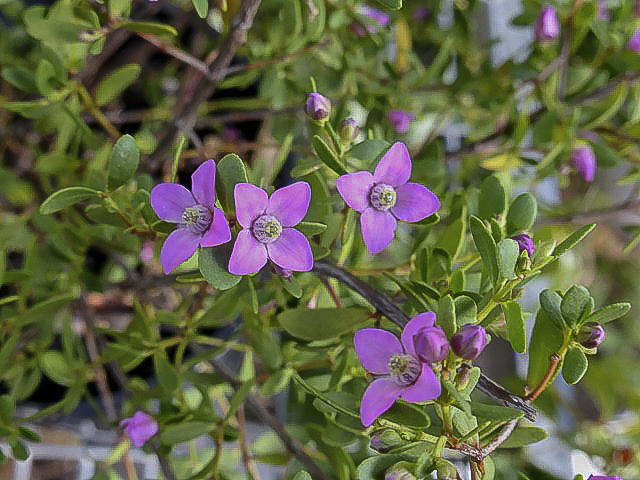
Boronia crenulata, sometimes known as the Aniseed Boronia, is a Western Australian native and is found in the southwest corner of that botanically rich state. This small shrub will reach a height of about one metre with a similar spread
Astartea ‘Winter Pink’
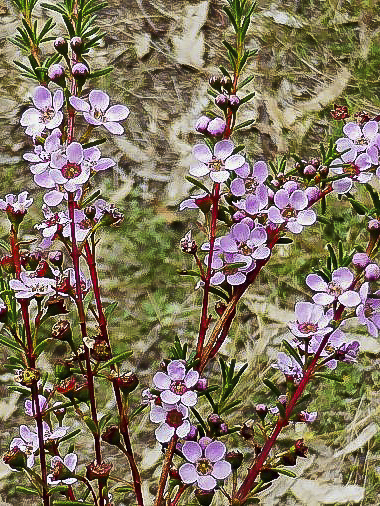
Astartea ‘Winter Pink’ is a dense shrub that will reach a height of about 50 centimetres with a similar spread. The aromatic leaves are about four millimetres long and carried in whorls around the stems. The flowers are 10 millimetres in diameter, deep pink and carried from April to October. Blooms are both profuse and conspicuous.
Acacia brownii
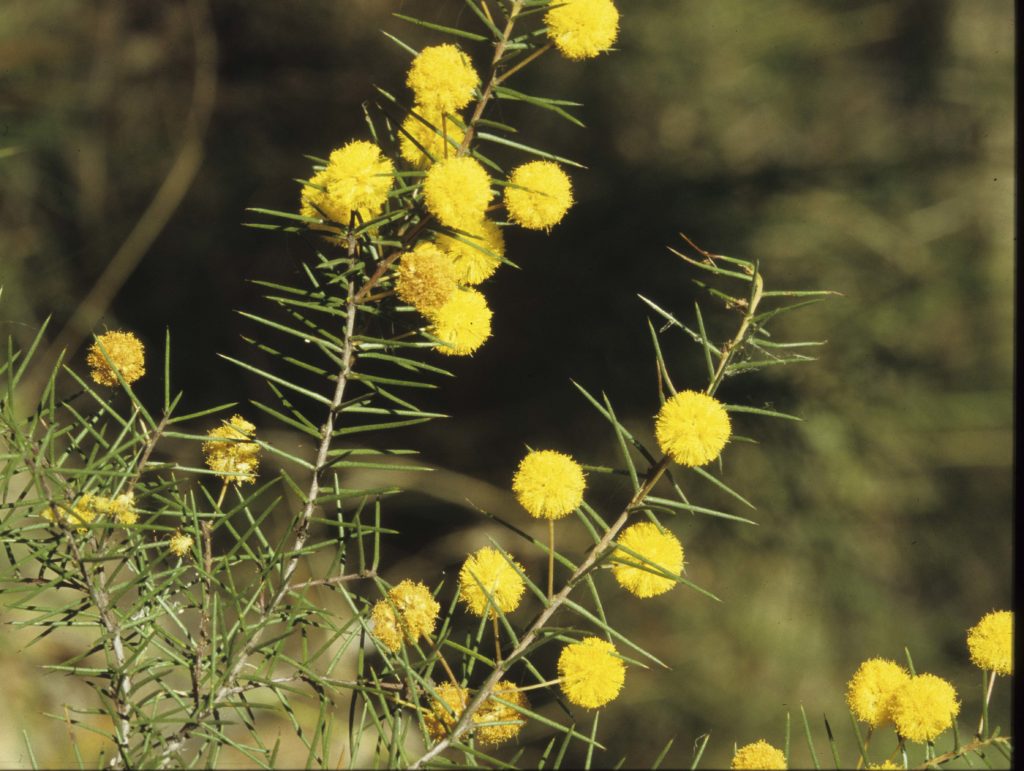
Acacia brownii, the Heath Wattle, is a small shrub reaching a height of one metre. The phyllodes are rigid, 4-angled, about two centimetres long and crowned with a sharp point. The flowers are held in globular clusters with 12-30 flowers in each cluster and bright yellow.
Acacia pravissima ‘Bushwalk Baby’
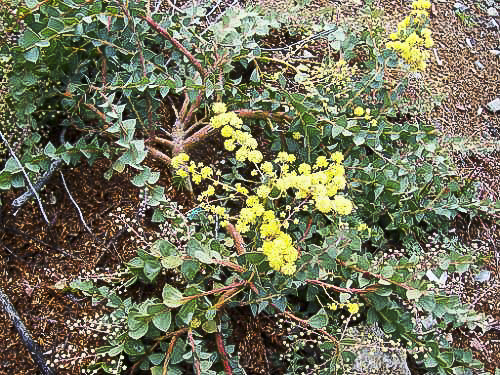
Acacia pravissima ‘Bushwalk Baby’ is a low growing form of the usually upright Acacia pravissima, the Ovens Wattle. The phyllodes are small, wedge-shaped and grey. They are arranged spirally around the stems. Yellow flowers are held in globular clusters and cover plants in spring. As the flowers fade cut off each branch behind the spent blooms. This will maintain the plant’s bushy growth habit.
